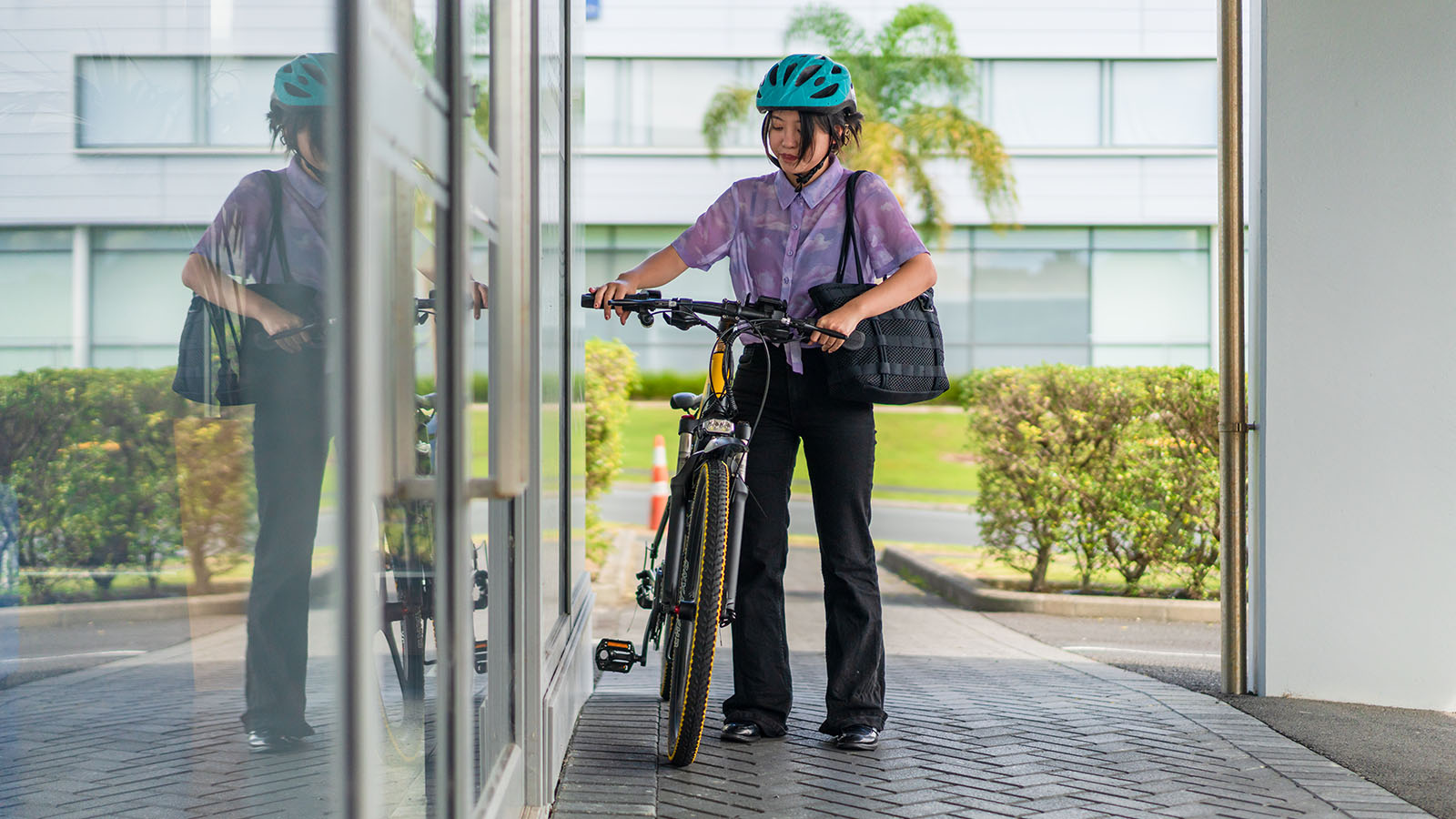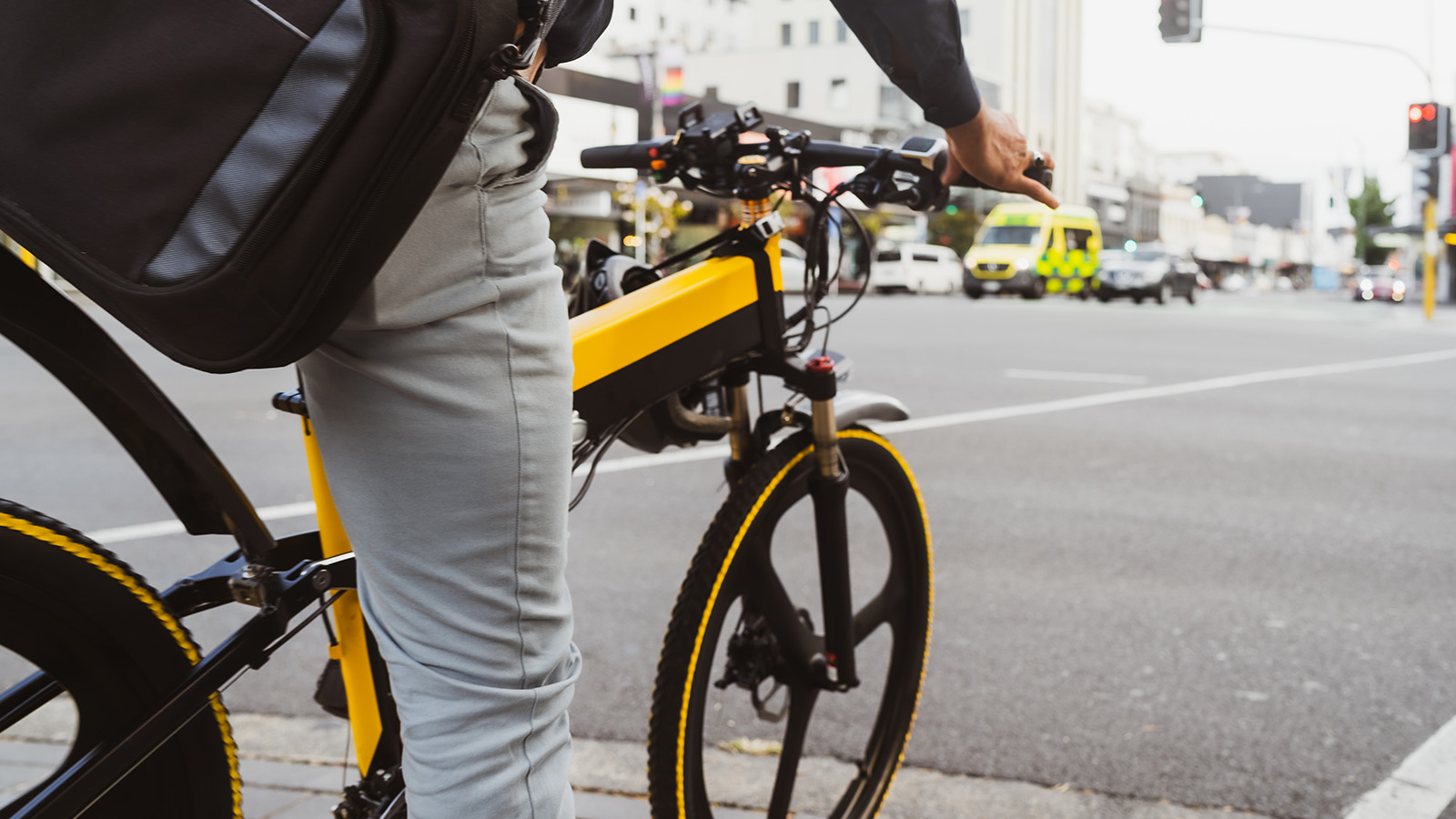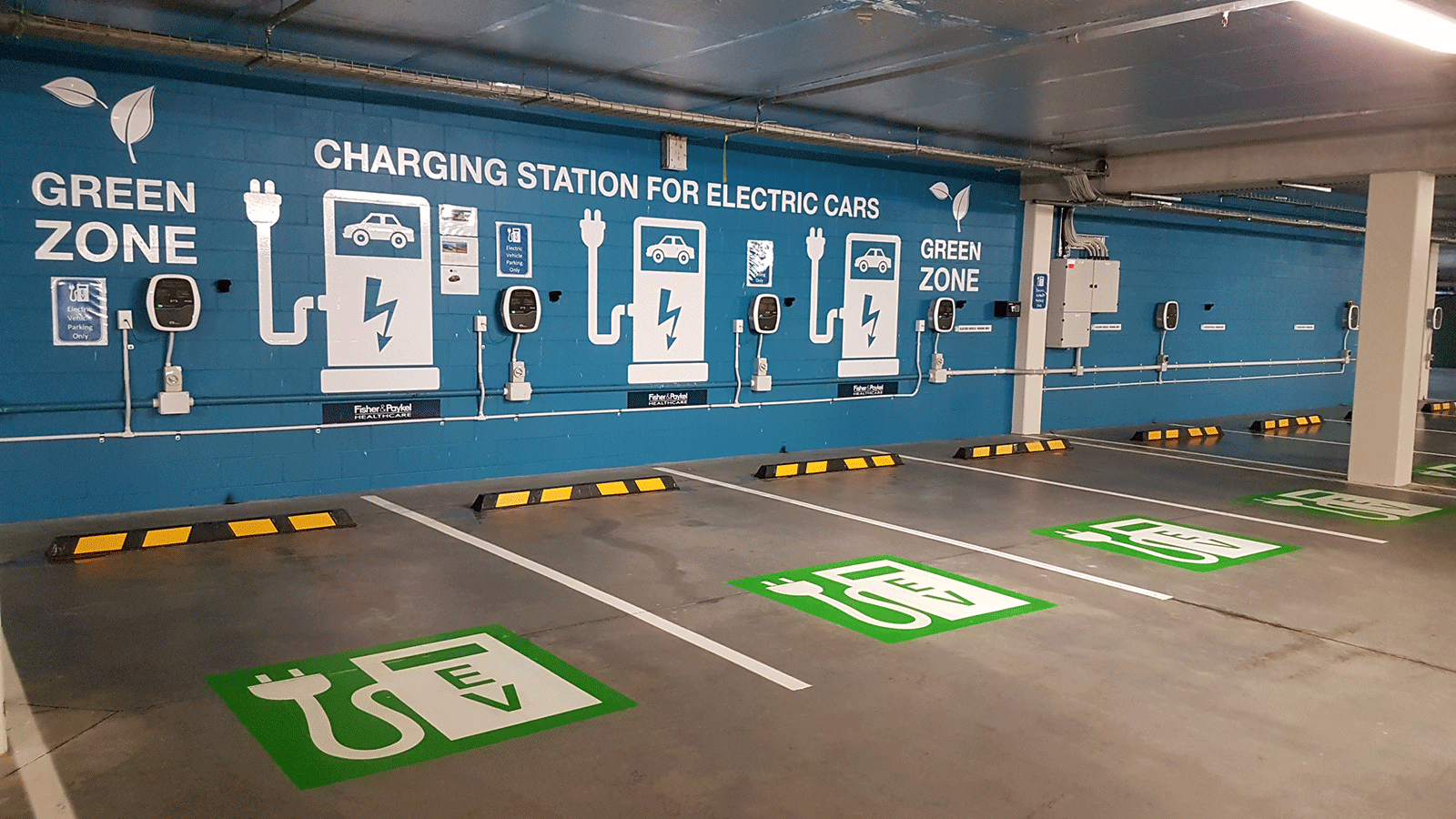Collectively we spend 146 million hours getting to work every year — most of that in cars, alone. In fact, 78% of workplace commutes in New Zealand are by car.1
As a country, our greenhouse gas emissions from transport have been steadily growing since 1990, but Stats NZ data shows that we had a 2.5% drop in emissions from private transport in the final three months of 2022, which suggests that this might be starting to change.
Richard Briggs, GM Transport at EECA (the Energy Efficiency and Conservation Authority) says that while getting to work without a car is understandably not always an option, if those who can, do, fewer cars on the road will result in a less stressful commute for everyone.
"Emissions reduction is about progress – not perfection,” he says. “Switching out the car for a sustainable commute even one day a week will make a positive difference collectively.”
Businesses, particularly urban ones, can play an important role in supporting staff to commute sustainably. By offering facilities and a positive culture around sustainable travel, workplaces can make it easier for staff to leave their cars at home and enjoy cheaper, low-stress commutes.
Here are seven practical ways you can promote sustainable commuting in your workplace.

1. Offer bike parking, lockers and showers
EECA’s research highlights that most businesses don't offer facilities to support active forms of transport like walking or biking. Just 30% of businesses provide secure bike parking, and 24% provide showers and/or lockers, compared with 72% that provide carparking.2
“While our survey data shows that New Zealand workplaces are still prioritising carparking, we are seeing increases in those offering facilities for active commuters,” says Richard.
“If your workplace currently pays for staff car parking, perhaps some of that budget could be shifted to upgrading facilities to support active commuting.”
By offering lockers and shower facilities, employers make it easier for employees to freshen up upon arrival. This consideration not only supports active commuting choices but also ensures that employees feel comfortable and ready for the workday ahead.
For those who prefer a two-wheeled commute, providing secure bike parking facilities is essential. Employees are more likely to cycle to work if they have a safe and convenient place to store their bikes during the workday. Covered bike racks in well-lit areas can make a significant difference in promoting cycling as a viable commuting option.

2. Subsidise public transport
Businesses often offer work vehicles and parking as perks, so why not public transport subsidies?
Genesis Energy, for example, implemented a 25% discount on public transport, which is applied directly to staff transport cards through the internal HR system and a connection with Auckland Transport.
"We were the first organisation to work with Auckland Transport like that, co-investing in public transport,” said project manager Hope Allum.
“We found that 61% of our people used the initial two-week trial, and then 81% took up the subsidy, so it was really impactful."
With the exemption on Fringe Benefit tax for employer-subsidised public transport that has been in place since April 2023, it is now more cost-effective than ever for employers to offer staff this benefit.
Catching public transport allows you to do things you can't do in a car, like read a book or fire off an email. It’s a great opportunity to decompress and transition between work and home.

3. Facilitate car-pooling opportunities
For those who rely on cars for their commute, car-pooling, or sharing your ride, can significantly reduce the number of vehicles on the road.
“Car-pooling not only reduces emissions, but also helps to ease traffic congestion and saves employees money on fuel and parking,” says Richard.
Employers can play a role in connecting employees who live in the same area and encouraging them to car-pool.
Genesis Energy went one step further – as part of their sustainable travel project, they looked at where employees were travelling from and realised there was a lack of public transport options in East Auckland that was affecting 8% of staff. To resolve that, they put in a shuttle service that removes the need for driving.

4. Encourage e-bikes
E-bikes are opening up the option of cycling to work for more New Zealanders than ever before. The average one-way car trip to work is 10.7km – most people can travel this distance in 25 minutes on an e-bike.
“The benefit of e-bikes,” says Richard, “is that you still get all the health benefits of pedaling, but dealing with hills, headwinds, and carrying extra loads is much easier. You can get to work without breaking a sweat – which means you don’t need to shower or change when you arrive.”
Richard also notes that new cycleway development in our major cities and towns in recent years has made it much safer and easier for cyclists to get around.
New Zealand timber company Abodo has three e-bikes included in its e-fleet, which are available for staff at their Mangere warehouse to book out and use to travel to and from work.
“Getting our team on electric bikes means they have more money in their back pockets, for things that are more important than fuel and car maintenance,” says Daniel Gudsell, Abodo Founder and Managing Director.
E-bikes are gaining in popularity in New Zealand – with imports increasing 420% between 2015 and 20223 – but there are still a lot of people who haven’t yet given one a go.
You can encourage e-bikes at work through initiatives such as arranging a demonstration and/or discount with an e-bike retailer, offering e-bike rentals or loans, or implementing a purchase support scheme where the up-front cost of the bike is paid back over time.
A new Fringe Benefit Tax (FBT) exemption was applied to e-bikes and public transport from April 2023, meaning that when e-bikes are purchased for staff, the employer doesn't have to pay FBT. They can also claim back the GST, and if the employee is paying back the cost of this purchase to their employer, it can come out of their gross pay before income tax is applied. In short, e-bikes now get the same tax benefits as employer-provided car parking, and it works out much cheaper for the employee to purchase an e-bike this way.
New FBT exemptions explained | Deloitte(external link)
Implementing an e-bike purchase support scheme | Waka Kotahi(external link)

5. Prioritise EVs
EV registrations are at an all-time high in New Zealand, and according to EECA’s research, 45% of people now say they would consider an EV for their next vehicle purchase3. If your workplace provides carparking, you can help incentivise staff to consider EVs over fossil-fuelled cars by offering convenient charging infrastructure.
Back in 2016, when they had just four EV drivers on staff, Fisher & Paykel Healthcare installed four EV charging stations as a pilot project to encourage more staff to drive EVs – a ‘build it and they will come’ approach. By October 2018, there were 35 EV drivers regularly using the four charging stations, in three ‘shifts’ across the day. Over the following year, they expanded their facilities, installing another 46 staff EV chargers on site.
“Being able to charge up at work and leave with a ‘full tank’ is a real benefit for people, particularly for those with lower range vehicles,” says Geoff Bold, Senior Clinical Research Scientist and EV champion, Fisher & Paykel Healthcare
And for work-owned vehicles, not only are EVs better for your carbon footprint, but they are likely to be a more cost-effective investment. EVs have lower fuel and maintenance costs than petrol and diesel vehicles.
Richard says, “It’s also worth exploring car-share options, like Mevo and Zilch, where a corporate subscription allows staff to hire cars by the hour, as needed, so you don’t need to maintain your own fleet.”

6. Measure staff commuting emissions
Knowledge is power – by measuring the carbon emissions of staff commuting in your workplace, you can set a baseline from which to improve.
To do this, says Richard, you start with a survey – find out how far staff are commuting, and by which modes of transport.
You can then use standardised ‘emissions factors’ to calculate the CO2e (carbon dioxide equivalent emissions) produced for each kilometer traveled, for each mode of transport. For example, emissions from a private petrol car are calculated at 0.265 tonnes of CO2e per kilometer.
The Ministry for the Environment publishes these emissions factors and guidance around emissions measurement and reporting (see section 7 of the guide linked below).
There are also online emissions calculators and survey tools you can use that do the hard work for you.
Measuring Emissions Detailed Guide(external link)
Get started with workplace emissions measurement

7. Promote a car-light work culture
There are many benefits to cleaner commuting for both employees and employers. A 2021 Waka Kotahi survey found that commuters who walked or travelled by bike valued the health and cost-saving benefits, and reported feeling less stressed. In contrast, congestion was a common source of stress and frustration for commuters who travelled by car.
There are plenty of ways to encourage your staff to choose a climate-friendly commute that don’t involve installing new facilities. Some common features of workplace cultures that prioritise sustainability include:
- More relaxed dress codes – formal wear can be a barrier to cycling in particular, as staff need to pack a change of clothes which then gets wrinkled before wear.
- Flexible working – allowing staff to work from home on occasion cuts out the emissions associated with the car commute they would have otherwise made that day.
- Social activities – identify champions at work who can come up with fun ways to promote sustainable commuting, such as participating in World Car Free Day and the annual Aotearoa Bike Challenge(external link)
Habits may be hard to break, but more than 70% of New Zealanders say they are prepared to change their own personal behaviour in order to reduce their impact on the climate4.
Check out these resources for promoting sustainable commuting in your workplace
Even small changes can make a huge dent in our carbon emissions. If just one in five of us switch the car for active transport (biking or walking), or even work at home one day a week, we could avoid 84,000 tonnes of carbon emissions each year – that’s like taking 35,000 cars off the road for good.
Read next
-
Climate action is good for business
Reducing energy use and switching to cleaner fuels can have many benefits for business, beyond reducing greenhouse gas emissions.
- Emission reduction
- Energy management
- Working Gen Less
25 May 2023
-
Genesis is changing the way their people move
Genesis Energy is making big changes to the way their people get around – and saving a lot of carbon emissions in the process.
- Low emission transport
19 April 2022
-
EVs take off at Fisher & Paykel Healthcare
Through investing early in EV infrastructure, Fisher & Paykel Healthcare has seen the number of their staff driving EVs grow from just one in 2014 to more than 115 in 2022.
- Electric vehicles
- Emission reduction
- Low emission transport
23 June 2022
